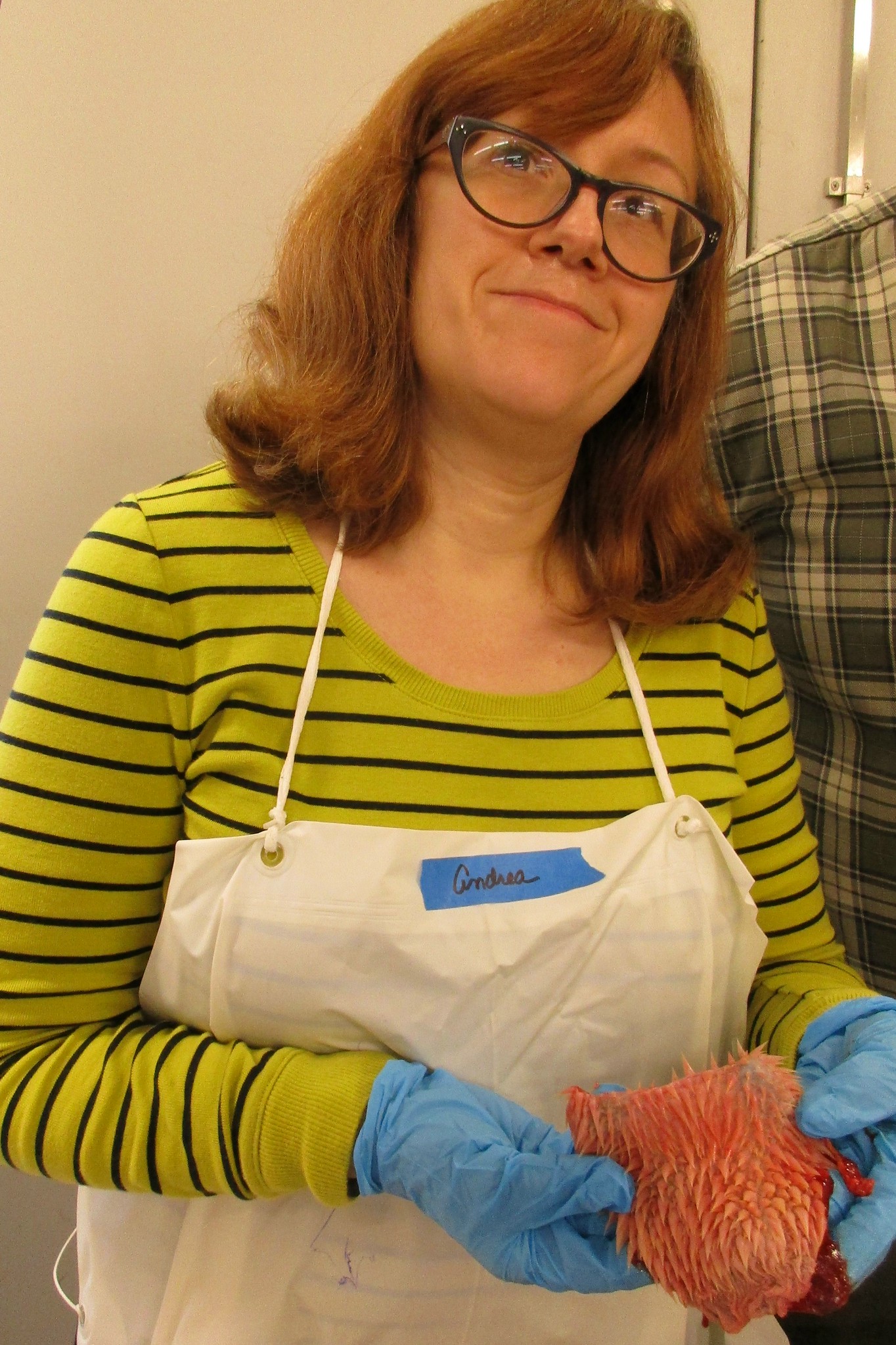I wasn't sure we were cut out for such work but we took out training on January 16th and assisted on two turtles that day. We found a way to detach ourselves from the cute little swimming animals and look at their innards in a purely scientific way and we were fine. And we learned a hell of a lot. We went back for more on January 23rd, driving to the Cape in the morning, knowing full well that a big snow storm was approaching. We got there on time, assisted on one turtle, then got our own specimen to be amateur pathologists on.
The turtles come to our work area with the plastron already cut open. Andrea was the "cutter" while I was the "scribe". (I stayed cleanish and wrote down the data while Andrea got bloody with turtle guts.) It is served up like a bowl of turtle innards that she had to dissect. First, she had to cut the peritoneum (the "Saran Wrap") that holds all of the stuff in place, then we inspect and dissect the heart, spleen, liver, small and large intestines, stomach, lungs, esophagus, kidneys, bladder... all stuff that we can actually identify now. We look for cysts, anomalies and contents, cutting out and collecting problem areas for further inspection.
Our maiden voyage solo turtle was a female (we can tell that now, too!) who had ingested quite a bit of beach debris (sand, broken shell) after death. Otherwise, her organs were in good shape. Definitely a victim of the cold-stun.
Andrea really kicked ass doing this. She even removed the rear flippers (something I can't even watch) which are collected for medical training. (To teach students how to inject needles into turtles skin... nothing like using the real thing.) While I didn't take many pictures over the past two weeks (out of respect for the deceased turtles), here is one of Andrea displaying what the inside of a Kemp's ridley sea turtle's esophagus looks like.

Nature's sand-filter.
We have more dates for necropsies in the upcoming weeks (who says I ain't romantic?) and we look forward to learning more and perhaps helping to shed some light on this ongoing plight of these beautiful animals.
you folks are walking the walk chickie
ReplyDeleteMuchachos, Mike y Andrea,,,,,!Qué tarea triste ,lo digo por las tortugas !!!Espero que ustedes ,todos, estén muy bien ,Cariños Martha
ReplyDelete